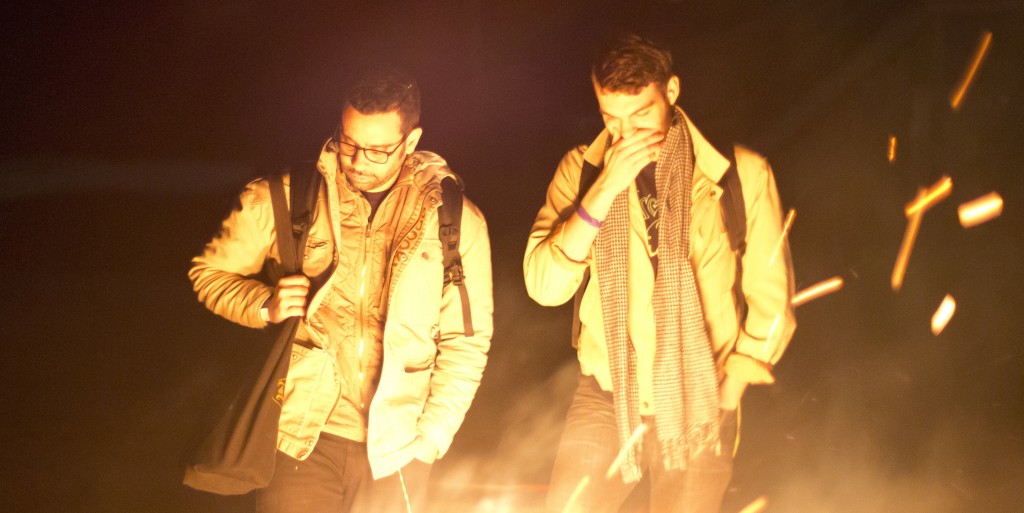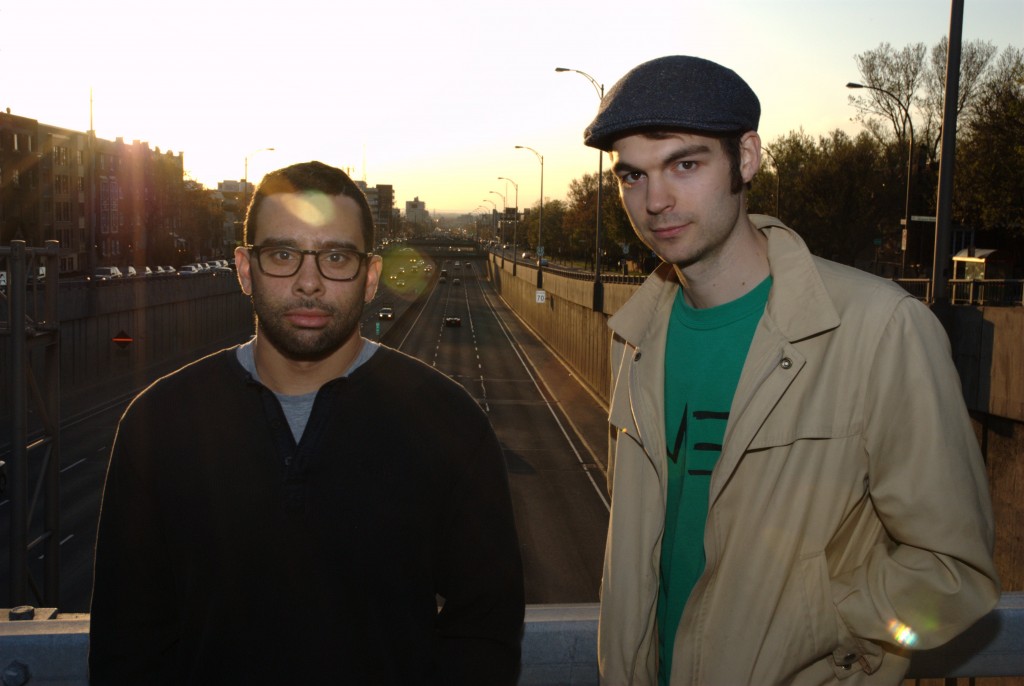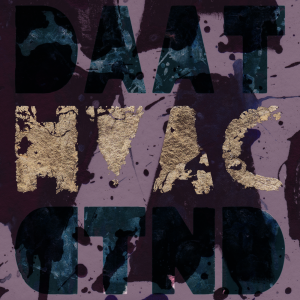
Meet DAAT: the experimental drum & bass production duo from Montréal. They specialize in a unique interpretation of their genre, combining post-breakbeat rhythms with exquisite, apocalyptic soundscapes. As Drum & Bass keeps pushing forward, DAAT steps off the beaten track.
This last summer, their 12″ single “Fridge” was released on their DTND Transmissions label and named as “Tune of the Month” from international magazine Mixmag. The tune was further supported on London’s Rinse FM and BBC Radio 6 from DJ Flight and Rob Da Bank, respectively. In Montréal, they hold a residency with the Artefact experimental drum & bass music series and are featured regularly on CKUT 90.3FM.
In a small café in downtown Montréal, we caught up with DAAT to discuss their interpretation of Drum & Bass, the Artefact music series and the DTND Transmissions record label.
Jason: We try to capture a vibe really well. If there’s a particular mood that something evokes that we are influenced by, we try to represent it in the music without using it in a direct way.
Joe: If there’s something that’s influential, we try to figure out what it is about that aesthetic that really strikes us and then recreate that somehow from our own repertoire, or palette of tools. Our knowledge of sound design through scientific aspects really helps with that because we can deconstruct things and try to reconstruct them based on first principles, if you will.
Jason: The titles of the tracks kind of say it well I suppose. For example, the track “Elevator”, is an elevator, and I would hope that to some extent it feels like elevator. We really try to be visual as much as we can within the auditory realm. I wouldn’t expect people to dance to it alone, but it can also be layered with other, more danceable tracks of the same BPM. So the tune could work in either a dancefloor or seated venue.
Joe: Always having dance tracks is not necessarily always what we’re after but if the crowd is more into stuff that is more beat driven we’ll use that.
Jason: Things like “Elevator” I would say are sound design pieces. Even though it’s not heavy with beats there are key pulse points and machine rhythms that infer the groove.
Joe: And it mixes, it’s at the tempo too. It’s possible to layer it with something else and have it sync up, if that’s what you want. I think that’s really important because different things pop out. I like to play them edge to edge and to hear every subtlety because we put a lot of detail in there. But at the same time the fact that it is mixable is like a bonus, a coup de grâce.
Jason: Because we love Drum & Bass, we’d never let that go. When you’ve decided to work within a particular genre, and lock into certain parameters (e.g., tempo), you’ve set yourself some limitations that can help explore new ways of presenting this music.
Jason: We can’t make the same tune twice. I can’t actually go through the completion process of a tune unless I’m learning something completely new. I think it was enforced somewhat by my academic pursuits. It has to be something fresh that captures my immediate interest, or I can’t complete it. It just won’t get done.
Joe: I think, at this point at least, it’s more of a question of pushing against limitations that we find. I know that “everything’s possible” with digital synthesis and current technology but really there are certain fundamental things you can’t get around, like the delivery system and how big a signal can be and how to fit sounds into that and how to actually craft sounds.
Jason: Artefact consists of Scott Walker, Leslie Macglauglin and Conor O’Dwyer (Code), who runs Subtle Audio, and Alain (Traffic) and “we” [laughs]. We do the DTND radio show together with Traffic. We took it over from its founder, Dan ESB, who ran it for nine years. He moved out to the west coast for a short period, and we didn’t want to see it die, but its been a little longer than he expected.
Joe: Nearly three years at this point.
Jason: So once we took it over, a lot of things with DTND solidified. Conor, who has his own show on www.jungletrain.net (Subtle Audio Radio), was coming over for the show. We met Scott at a house party and found we had a common interest in pushing Drum and Bass in town. So we started talking about it and threw our first parties at Cabaret Underworld where we had Corey K from Montréal and Godfather Sage (Kian) from Baltimore, who has his own label Noisy Meditation. We then shifted gears and went to le Bleury and were there for a couple shows. We’re shifting venues again right now and we’re planning our next one for the end of September, early October.
Joe: The whole point of it is to focus on the music and represent genres that we don’t hear represented. Everything else is secondary. Every single night we’ve had, I’ve had a blast. The atmosphere has been great and so [we’re going to] just to keep going and get a bigger and bigger crowd going and basically just show people this music that a lot of people don’t know about.
Jason: Scott and Leslie are very instrumental in being the behind the scenes people who actually get the nights going. The two of them have been instrumental in several nights here in Montréal for the last ten years.
Joe: It all depends on who’s playing and to set the vibe whether it’s going to be more for Drum & Bass heads or more for an experimental crowd. I think keeping it multifaceted is the key because really what we’re after is really just people who want to hear new, good music.
Jason: There’s multiple different things that we’re trying to do and there’s different venues that can accommodate that. Sure there’s the venue where there’s dancing but I also see ourselves doing shows in a seated audience and exploring more of the sensorium format a lot more with a visual artist, similar to an A/Visions type of thing at Mutek. I’d like to recreate that feeling that we have when we’re creating the tracks and things start to work and we start to amass the layers. I feel as though that really works well in a seated environment where people are sort of watching an unfolding film or something like this. At the same time, in a different way, it’s good to have people dancing too.
Joe: Yeah it started out certainly as a vehicle for our own material and for collaborations, but I can see it expanding depending on the available resources and the circumstances of a given time.
Jason: There’s a lot of good music out there and I would love to take on other artists, but I’d want to make sure they were treated correctly (e.g., timely releases, pay) if we’re going to be associated with them. The best way to do that is build the label up while keeping it small, and expand as gets rooted. We do work in collaboration with people and would release remixes and this type of thing as well, which we’re planning on doing. Really it’s a one step at a time.
Joe: Quality control is a big thing for us. If we put something out, we want to ensure that there’s been thought put into every element of it. Personally I don’t want to see anything get rushed out the door just to meet a deadline or anything like that, or to go through with artwork I’m not completely happy with, even if things have to go back and forth several times. There’s a certain aesthetic at stake here.
Jason: The artwork goes hand-in-hand with this. Aaron Minerbrook (4EYES) is our artist, and is equally part of Detuned Transmissions. He has his schedule we have to work with, as well as our own.
Joe: It’s much easier to put things out when they’re all digital. It’s more difficult – for reasons of money, and distribution – when you’re making a physical product.
Jason: .mp3 distribution channels are different than those for vinyl. With vinyl, the units sold are much smaller, and as such there aren’t major corporations vying for control over a market. While its certainly possible to release .mp3s and have full control over the creative content, releasing vinyl is a way of maintaining an essence of local control over the music, and avoiding corporate influence.
Jason: We have a large project coming at the end of October that we are really excited about that we’ll be announcing shortly. Other than that we have a few tunes, collaborations, and remixes we’ve been working on. We’ve just completed a remix for Fushara for his forthcoming album on his new label, Lone Foundation.
Jason: Artefact crew, Conor (Code), Melissa. Everyone who’s listening, making, and supporting the music. Thank you for the interview!

